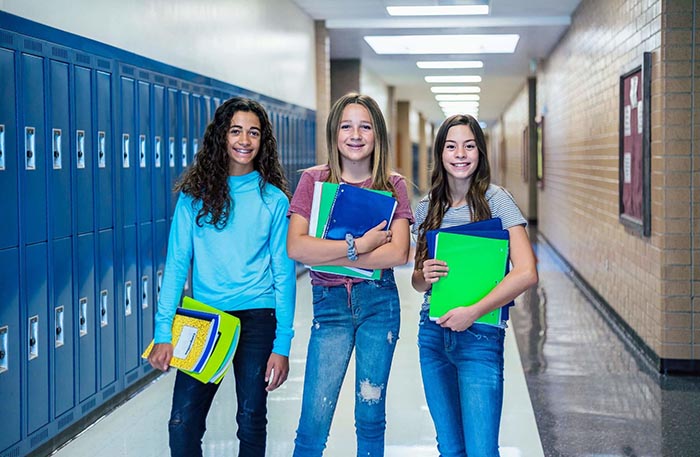
Arizona CTE school district finds that starting career literacy early, with fun, hands-on experiences, improves outcomes
From The Hechinger Report
By Rahsaan Bartet
May 10, 2022
Career literacy can no longer be an afterthought in education. Even though career planning has long been promoted in the U.S., we clearly aren’t doing enough, especially for girls and students from lower-income and minority backgrounds who, research tells us, tend to limit their aspirations. The earlier we focus on career literacy, the better.
Career literacy, when introduced early in life, can successfully challenge self-limiting notions. One way of equipping students to overcome a lack of information and make informed postsecondary decisions is by giving them a chance to explore diverse job paths. Exploring different career fields helps prepare them for both career and college. It’s also a way of providing tools for young learners to achieve their goals — and in many cases, aim higher.
At Western Maricopa Education Center (West-MEC), a Career and Technical Education (CTE) school district in Arizona, high school students and adult learners go through rigorous programs to become ready for in-demand careers. Since CTE focuses on hands-on learning and postsecondary preparation, it is a key ingredient in career literacy. It nurtures active learning, imparts professional skills and prepares students to transition into the workforce or higher education. In fact, a report by the U.S. Department of Education noted that students who participated in CTE programs graduated high school at a higher rate than their peers who did not participate and earned higher wages eight years after graduation.
At West-MEC, unlike a traditional school district, residents are not automatically considered part of the district based on their location but need to formally opt-in through a ballot. While West-MEC provides career training programs to high school students, it also supports elementary school district members through innovative career literacy initiatives. Each year, West-MEC allocates a significant amount of money to our two elementary school districts.
Typically, middle school is when many students disengage from school — this trend continues as they go on to higher grades. During this period of their lives, learners are still developing critical thinking abilities and prefer active learning. Research and feedback on career literacy initiatives have shown that introducing career learning early on helps students stay engaged through middle and high school, despite various socioeconomic hurdles, by focusing on their strengths.
In West-MEC, we focus our outreach in three main areas: funding CTE activities in middle schools and in summer camps and connecting industry partners with member schools.
For example, Pendergast Elementary School District provides middle school students with Python and other coding classes to enhance the science program. The West-MEC funding has helped middle school students there learn to code at high levels and in a more hands-on way. Gwyneth Marr, who heads the Villa de Paz coding program, said, “our middle school students can write line code and have gained credentials that set them apart from other students that have had access to computer science.” We also fund makerspaces, where students can visualize concepts and reinforce learning through hands-on projects.
Our summer camps have sprung back to life following a pause. Responding to widespread student disengagement due to pandemic-related stressors and online learning, teachers in the Pendergast district requested a camp that would reinforce the math learned during the year. The camp introduced eighth graders to coding and avionics. Through breadboards and robot-racing competitions, students saw practical applications of math. The impact of the event was evident when a girl who had never soldered wires into a circuit board succeeded after thirty minutes.
Career literacy, when introduced early in life, can successfully challenge self-limiting notions.
We also connect industries with elementary and middle schools to host sessions to showcase new and exciting job opportunities. For example, the Littleton Elementary School District’s STEM Academy partnered with the Phoenix Raceway, which provided students with a curriculum, field trips and information about various careers available in the company. The Arizona Masonry Council and the Building Talent Foundation are preparing to speak to Starlight Park Elementary School students about opportunities in the construction industry for their Career Fair day.
During the school year, CTE students and staff teach younger learners about the practical applications of lessons learned in class. Recently, one of our staff members visited the Littleton Fine Arts Academy, an elementary school, to help students prepare for their production of “Matilda the Musical, Jr.” The budding theatre enthusiasts learned how to use precision-measurement instruments and worked through fractions as they brought their set to life.
The collaboration of educators, industry partners and community members to nurture the next generation is exciting. We work to close learning gaps so that students can dream big dreams for the future, unhindered by stereotypes and a lack of opportunities.
As West-MEC’s Elementary and Community liaison, I have had the privilege to see the effect that these career learning experiences have had on young learners. Career literacy helps students understand their goals, likes and dislikes. It connects education with real life. At the end of the day, it is imperative that students find their purpose so that they can realize their dreams — whatever those dreams look like.
With its lasting impact, career literacy should no longer be an afterthought in education.
Photo: TeachHUB
Read this and other stories at The Hechinger Report

